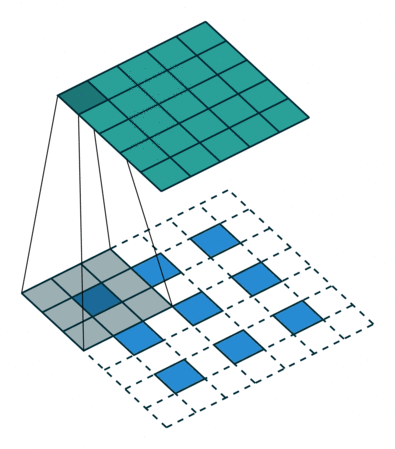In paper Generating High-Quality Crowd Density Maps using Contextual Pyramid CNNs, in Section 3.4, it said
Since, the aim of this work is to estimate high-resolution and high-quality density maps, F-CNN is constructed using a set of convolutional and fractionally-strided convolutional layers. The set of fractionally-strided convolutional layers help us to restore details in the output density maps. The following structure is used for F-CNN: CR(64,9)-CR(32,7)- TR(32)-CR(16,5)-TR(16)-C(1,1), where, C is convolutional layer, R is ReLU layer, T is fractionally-strided convolution layer and the first number inside every brace indicates the number of filters while the second number indicates filter size. Every fractionally-strided convolution layer increases the input resolution by a factor of 2, thereby ensuring that the output resolution is the same as that of input.
I would like to know the detail of fractionally-strided convolution layer.

